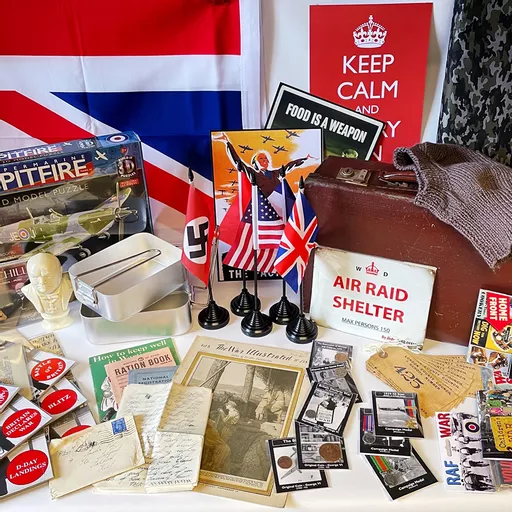Introduction
The D-Day Landings represent a monumental turning point in the annals of World War II, symbolising the commencement of the end for Nazi Germany's stranglehold over Europe. On the historic date of June 6, 1944, Allied forces embarked on a daring and meticulously planned invasion of Normandy, France. This audacious endeavor, known as Operation Overlord, was orchestrated with meticulous precision and unparalleled coordination, signifying a watershed moment that would reshape the trajectory of the entire conflict.
Planning and Preparation
The D-Day Landings were the culmination of months of painstaking preparation and strategic deliberation. Under the leadership of General Dwight D. Eisenhower, Allied commanders crafted a multifaceted plan of attack known as Operation Overlord. This comprehensive strategy encompassed the mobilisation and coordination of an unprecedented array of military assets, including troops, naval vessels, and aircraft. With meticulous attention to detail, Allied planners meticulously studied every aspect of the operation, from the selection of landing sites to the timing of the assault. The aim was to catch the German forces off guard and establish a foothold on the heavily fortified coastline of Normandy. The sheer scale and complexity of Operation Overlord underscored the Allied commitment to achieving victory at all costs.




Execution of the Operation
As dawn broke on June 6, 1944, the skies over Normandy were ablaze with the silhouette of Allied aircraft and the distant rumble of naval gunfire. Under the cloak of darkness, thousands of Allied soldiers, representing nations united in their resolve, descended upon the shores of Normandy. Their mission: to breach the imposing coastal defenses of Nazi-occupied France and secure a vital beachhead for the liberation of Europe.
Despite meticulous planning, the execution of the operation was fraught with peril and uncertainty. As landing craft approached the designated beaches of Omaha, Utah, Gold, Juno, and Sword, they encountered a hail of enemy fire from entrenched German positions. The deafening roar of artillery, the crackle of machine gun fire, and the thunderous explosions of naval bombardment filled the air, creating a scene of chaos and carnage.
Undeterred by the ferocity of the opposition, Allied soldiers braved the treacherous waters and stormed ashore with unwavering determination. On Omaha Beach, in particular, they faced particularly fierce resistance, with high cliffs and fortified bunkers looming ominously overhead. Yet, through sheer grit and courage, they pressed forward, scaling the cliffs and overcoming seemingly insurmountable obstacles..
By day's end, despite heavy casualties and unforeseen challenges, the Allied forces had succeeded in establishing a tenuous beachhead along the Normandy coast. The path to victory remained long and arduous, but the events of June 6, 1944, marked a decisive turning point in the war—a testament to the indomitable spirit and unwavering resolve of those who fought and bled on the shores of Normandy.
Significance of D-Day
The success of the D-Day Landings reverberated far beyond the beaches of Normandy, heralding a seismic shift in the course of World War II. By establishing a firm foothold on the shores of occupied France, the Allied forces achieved a strategic breakthrough of unparalleled significance. The invasion of Normandy represented the long-awaited opening of a crucial second front in Europe, effectively splitting the might of Nazi Germany and forcing its military machine to contend with threats on multiple fronts.
The liberation of Normandy not only dealt a devastating blow to the Axis powers but also paved the way for the eventual defeat of Nazi Germany and the end of the war in Europe. As Allied troops pushed inland and liberated towns and cities from enemy control, the tide of the war inexorably turned in favor of the Allies. The relentless momentum of the Allied advance, coupled with the relentless resolve of soldiers on the front lines, spelled doom for Hitler's Third Reich.




Legacy and Remembrance
To this day, the D-Day Landings are remembered and commemorated as a testament to the bravery and sacrifice of those who participated. Memorials, museums, and ceremonies honor the memory of the soldiers who fought and died on the beaches of Normandy. The lessons learned from D-Day continue to shape military strategy and serve as a reminder of the importance of unity and perseverance in the face of adversity.
The D-Day Landings were more than just a military operation; they were a defining moment in human history. By turning the tide of World War II, the Allies paved the way for a future of peace and freedom. As we reflect on the events of June 6, 1944, let us never forget the courage and determination of those who made the ultimate sacrifice for the greater good.
FAQs
-
What was the purpose of the D-Day Landings? The D-Day Landings were aimed at opening up a second front in Europe to relieve pressure on the Eastern Front and ultimately defeat Nazi Germany.
-
How many troops were involved in the D-Day operation? Approximately 156,000 Allied troops from various countries participated in the D-Day Landings.
-
Which beaches were targeted during the D-Day invasion? The Allied forces landed on five beaches in Normandy: Omaha, Utah, Gold, Juno, and Sword.
-
What challenges did the Allied soldiers face during the D-Day Landings? Allied soldiers faced heavy resistance from German defenses, including artillery fire, machine guns, and mines.
-
How did the success of D-Day impact the outcome of World War II? The success of the D-Day Landings marked a turning point in the war, leading to the eventual defeat of Nazi Germany and the liberation of Europe.


















